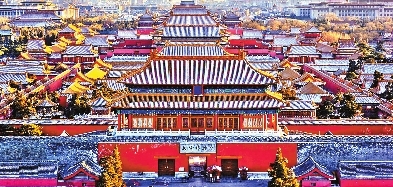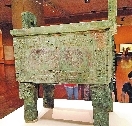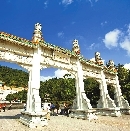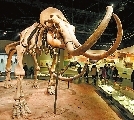
The Palace Museum is a UNESCO World Heritage site.
As of now, there are 4,692 museums in China. These museums hold more than 20,000 exhibitions every year and attract 700 million visitors. Some museums of cultural relics, such as the Museum of Qin Terracotta Warriors and Horses in Xi’an, have become internationally renowned tourist attractions.Palace Museum
Established in 1925, the Palace Museum is located in the imperial palace of the Ming (1368-1644) and Qing (1644-1911) dynasties. It served as the home of emperors and their households as well as the ceremonial and political center of the Chinese Government for almost 500 years.
The magnificent architectural complex and the vast holdings of paintings, calligraphy, ceramics and antiques from the imperial collections make it one of the most prestigious museums in the world. In 1961, the State Council designated the former imperial residence as one of China’s foremost-protected cultural heritage sites, and in 1987 it was listed as a UNESCO World Heritage site. With over 14.6 million annual visitors, the Palace Museum is the most visited museum in the world.

Simuwu Ding from the Shang Dynasty.
The collections of the Palace Museum originate from the Qing imperial collection and include ceramics, paintings, calligraphy, bronzes, timepieces, jades, palace paraphernalia, ancient books and historical documents. The total number of works of art in the museum’s collection exceeds 1.8 million.
National Museum of China
The National Museum of China is located on the east side of Tian’anmen Square in Beijing. It is the largest comprehensive history museum in China. Through displays of both material and nonmaterial collections and exhibits, it narrates the history created by the ancestors of the Chinese people.

The Palace Museum in Taipei.
The museum, covering Chinese history from the Yuanmou Man of 1.7 million years ago to the end of the Qing Dynasty (the last imperial dynasty), has a permanent collection of 1.05 million items, with many precious and rare artifacts not to be found in museums elsewhere.
Among the most important items are the Simuwu Ding from the Shang Dynasty (1600-1100 B.C.) (the heaviest piece of ancient bronzeware in the world, at 832.84 kg) and a square-shaped Shang Dynasty bronze zun decorated with four sheep heads.

An exhibition hall in the Tianjin Natural History Museum.
Taipei’s Palace Museum
The Palace Museum in Taipei has a permanent collection of nearly 700,000 pieces of ancient Chinese imperial artifacts and artwork, making it one of the largest of its type in the world. The collection encompasses over 10,000 years of Chinese history from the Neolithic age to the late Qing Dynasty. Most of the collection are high-quality pieces collected by China’s emperors.
The museum and the Palace Museum in the Forbidden City in Beijing share the same roots. The Palace Museum in Beijing split in two as a result of China’s War of Liberation between 1946 and 1949.
Nanjing Museum
With an area of 70,000 square meters, the Nanjing Museum is one of the largest museums in China. The museum currently has over 400,000 items in its permanent collection, making it one of the largest in China. Especially notable is the museum’s enormous collections of Ming and Qing imperial porcelain, which is among the largest in the world.
Tianjin Natural History Museum
The Tianjin Natural History Museum was set up in 1914 by a French missionary and opened in 1927, with the previous name as Beijiang Museum. It received the present name in 1957. The museum specializes in collections of paleontology and paleo-anthropology fossils. Specimens total 380,000, and the key collections showcase fossils from the late Cenozoic Era.
(SD-Agencies)
Editor: Jane Chen